The Museo della Civiltà Romana – the Museum of Roman Civilization – is situated in EUR, a modern city that was the brainchild of Fascist dictator Benito Mussolini. It’s one of Rome’s most interesting museums, however many visitors miss it due to its remote location.
EUR
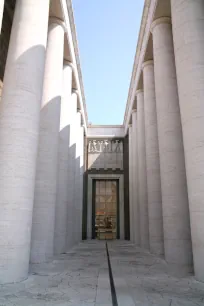
A trip to EUR, Rome’s starkly modern “city” located about seven kilometers (4.3 miles) outside the historic city center, will reveal a plethora of huge contemporary structures proposed by Mussolini for a 1942 exposition that never materialized, due to World War II. The Fascist leader hired architect Marcello Piacentini to design these monumental buildings.
However, Mussolini’s project never really became what he meant it to be. The unfinished area reverted to the control of the new government after the war, and soon housed a number of government offices and other civic buildings.
While some visitors head to EUR just to take a look at Mussolini’s failed dreams, there are a few things worth visiting there. The most notable is the Museo della Civiltà Romana.
Museum History
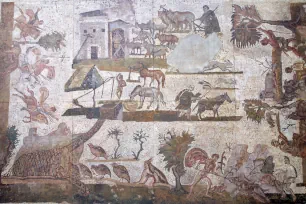

The Museum of Roman Civilization opened its doors to the public in 1955, but the history of the museum’s collection goes back to 1911, when an archaeological exhibition was held in the Baths of Diocletian.
Here the idea was floated to create a permanent collection and in 1929 the Museum of the Roman Empire was created. Construction of a dedicated building started at EUR, but works were halted in 1942 due to the war.
Thanks to financial backing from Fiat (an Italian automobile manufacturer), the building was completed in the early 1950s. The museum opened in two phases, first partially in 1952, and finally in 1955 in its entirety.
Museum Collection
The museum is divided into 59 sections that illustrate the history of Rome and its culture. Its collection consists mostly of replicas and scale models. The museum’s main draws are casts of the reliefs on the Column of Trajan and a complete scale model of Imperial Rome.
Scale model of Imperial Rome
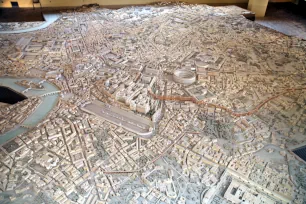
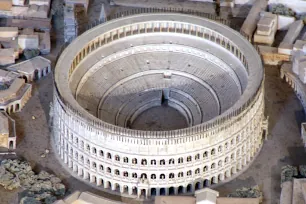
Ask any previous visitor about their favorite part of the museum, and they will probably tell you about the scale model of Rome, known as the Plastico di Roma Imperiale.
The twenty by twenty meters (66 x 66 ft.) large model shows the buildings of Rome during the reign of the Emperor Constantine I (early fourth century). The model is 1:250 scale and took archaeologist Italo Gismondi thirty-six years to complete. It can be viewed from an elevated platform. The details are fascinating, and the model is reason enough to make the trip to EUR.
And there’s even another model of Rome in the museum. Known as the Plastico di Roma Arcaica, this model shows Rome as it must have looked during the Republican Era.
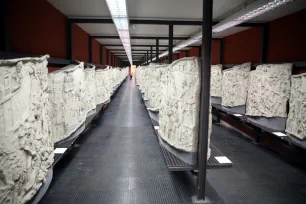

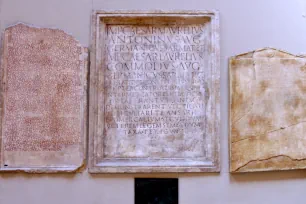
Trajan’s Column
Also inside the museum, guests will find a fascinating display of the complete sequence of casts of the spiral reliefs around Trajan’s Column, arranged in horizontal rows at ground level for easy viewing. The panels, which in total had a length of more than 150 meters (almost 500 ft.), fill a whole room and can be viewed from up close.
More Highlights
Besides the scale model of Rome and the panels of Trajan’s column, there are many other interesting objects on display.
The museum has many mosaics, reliefs and utensils that give some insight into daily life in ancient Rome, like the third century decree issued by Emperor Diocletian meant to put a halt to the rampant inflation. There is also a reconstructed library modeled after the library of Hadrian’s Villa in Tivoli.
There are also many more scale models, including models of the Circus Maximus, the Theatre of Marcellus, the Circus of Maxentius, the library of Trajan’s Forum and the Stadium of Domitian.
The Museum Building
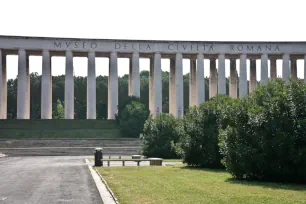
The building that houses the Museum of Roman Civilization was designed by architects Pietro Aschieri, Domenico Bernardini, Gino Peressutti and Cesare Pascoletti and was originally built between 1939 and 1941 for the Universal Exhibition of Rome that was planned for the following year. After a hiatus caused by the war, it was completed in 1955.
The architectural style is typical for the buildings in EUR, a modernized version of the monumental buildings of Ancient Rome. It consists of two majestic but rather bland looking structures that are connected to each other by an imposing colonnade with massive travertine columns.

